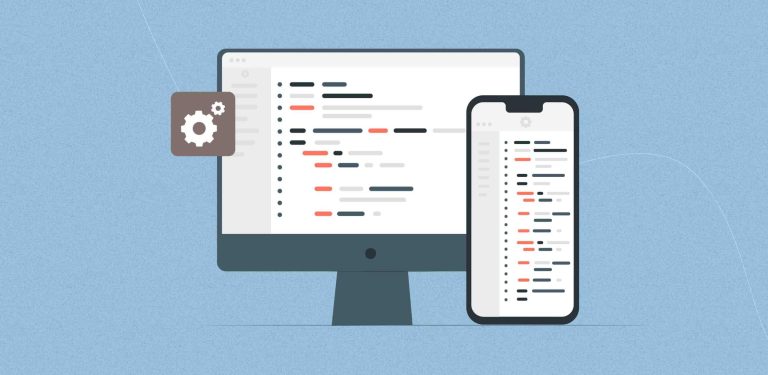


SaaS products have revolutionized modern business, becoming indispensable tools across industries by streamlining operations and elevating customer experiences. With their cloud-based accessibility and subscription-based model, SaaS products enable businesses of all sizes to leverage powerful software without heavy infrastructure investment.
This guide will take you through every essential phase of building a successful SaaS product, from concept validation to market launch. Whether you’re an emerging startup or an established enterprise, understanding the SaaS development process will help you create solutions that stand out in today’s competitive landscape.
A SaaS (Software as a Service) product is a cloud-based software application that users access through the internet, enabling companies to provide software solutions without requiring users to install or manage physical software on their own devices. SaaS products differ fundamentally from traditional software in that they don’t require on-premises installation; instead, they are hosted and maintained on cloud servers managed by the service provider. This setup has become increasingly popular due to the flexibility and scalability it offers, allowing businesses to streamline their software usage without the heavy lifting associated with software management.
Discover Our Cutting-Edge SaaS Application Development Services
SaaS products come in a variety of applications that cater to different business needs. Here are a few of the most widely used types:
The SaaS (Software as a Service) model has rapidly emerged as a transformative force in the software industry, with businesses and individuals alike embracing the convenience, cost-effectiveness, and flexibility it offers. SaaS products are delivered over the internet, providing users with a seamless experience, constant updates, and instant accessibility, eliminating the need for on-premises installation. This shift to cloud-based software has created a thriving SaaS market, with an increasing number of companies adopting SaaS applications to streamline operations and enhance productivity.
The SaaS market has seen tremendous growth over the past decade. According to recent industry reports, the global SaaS market is projected to reach over $200 billion by 2025, driven by several key factors:
Increased Demand for Cloud Solutions
Organizations are moving away from traditional software models and adopting cloud-based services at a significant pace. Cloud solutions offer greater flexibility, allowing companies to access data and applications from anywhere with an internet connection. This remote accessibility, especially critical in the post-COVID era, has fueled the demand for SaaS as it supports remote work, collaboration, and flexibility like no other model.
Operational Efficiency and Scalability
SaaS solutions are designed to scale with business needs. Unlike traditional software, where scalability requires additional hardware and IT management, SaaS applications provide a scalable infrastructure from the outset. This allows businesses to adjust their usage based on current needs without incurring significant additional costs, making SaaS particularly attractive to startups and SMEs looking to expand rapidly without heavy capital investment.
Reduced Infrastructure and Maintenance Costs
With SaaS, companies no longer need to invest in physical servers or IT staff to manage and maintain software systems. Instead, these responsibilities fall to the SaaS provider, who manages the infrastructure, updates, and security. This not only reduces overhead costs for businesses but also enables them to focus more on core competencies and strategic growth initiatives.
Seamless Updates and Improved User Experience
Traditional software typically requires periodic, often disruptive updates, with potential downtime and compatibility issues. In contrast, SaaS applications are updated automatically, with new features and security patches rolled out seamlessly by the provider. This ensures users always have access to the latest functionalities and an optimized experience without any need for manual upgrades or system downtime, enhancing overall satisfaction and user loyalty.
The market potential of SaaS lies in its ability to cater to a vast array of industries and use cases. Businesses across sectors—such as healthcare, finance, education, retail, and technology—are increasingly adopting SaaS for its versatility and cost savings. Here’s why SaaS continues to expand and attract investment:
Broader Adoption Across Industries
SaaS applications are no longer limited to core business functions like HR, sales, or customer service. Today, specialized SaaS solutions exist for virtually every industry, enabling more specific use cases. For example, telemedicine platforms are revolutionizing healthcare, e-learning SaaS applications are transforming education, and fintech SaaS solutions are enhancing financial services. This widespread adoption across various sectors has significantly contributed to the growth of the SaaS market.
Subscription-Based Revenue Model
The SaaS model’s subscription-based approach offers both users and providers numerous financial advantages. Users enjoy predictable monthly or annual costs without high initial expenses, while providers benefit from a steady, recurring revenue stream. This model also provides opportunities for upselling and cross-selling, as businesses can easily add new features or expand services based on customer demand, enhancing revenue potential for SaaS companies.
Global Reach and Accessibility
SaaS products are accessible globally, which expands their potential user base. With a cloud infrastructure, SaaS providers can serve customers from any location, enabling them to tap into emerging markets without requiring a physical presence. This global reach is a significant advantage, particularly for smaller SaaS providers that may lack the resources to establish international offices.
Data-Driven Insights and Continuous Improvement
SaaS providers benefit from continuous access to user data and engagement metrics, which enable them to make data-driven improvements to their applications. By analyzing how customers interact with their software, SaaS providers can refine user experiences, implement popular feature requests, and stay ahead of competitors with targeted enhancements. This continuous improvement cycle enhances the software’s relevance and value, ensuring the SaaS application evolves alongside changing customer needs.
High Levels of Security and Compliance
The demand for data privacy and security has never been higher, particularly with regulations like GDPR and HIPAA requiring businesses to ensure the protection of personal data. Many SaaS providers offer advanced security measures, which are often more robust than what individual businesses can implement on their own. Additionally, SaaS providers frequently undergo regular security audits and updates to meet compliance standards, making SaaS solutions a more secure choice for many companies.
The continued growth of the SaaS market can be attributed to the following factors:
Here are some key statistics highlighting the growth potential of the SaaS market:
The demand for SaaS is only set to grow, fueled by the need for cost-effective, scalable, and secure solutions that can meet evolving business needs. As companies prioritize agility and flexibility in an increasingly competitive landscape, the SaaS model will remain a cornerstone of the digital economy.
The widespread adoption of SaaS products in modern business underscores their transformative role in improving productivity, reducing costs, enabling flexible work environments, and supporting scalability. Here’s a closer look at how SaaS products empower businesses and why they are essential in today’s digital-first environment.
SaaS solutions significantly enhance productivity by allowing teams to collaborate seamlessly and access data from a centralized platform. These tools provide features like real-time data synchronization, instant updates, and shared document editing, enabling multiple users to work together on the same project from different locations. By centralizing information and workflows, SaaS products eliminate time-consuming file transfers and version conflicts, making collaboration smoother and more efficient.
Example: With SaaS platforms like Google Workspace, employees can collaborate on documents, spreadsheets, and presentations in real-time, whether in the office or on the go. This instant access to shared files and resources accelerates project timelines and helps teams stay aligned.
Traditional software models require dedicated IT teams, extensive hardware, and regular maintenance, all of which can be costly to manage. SaaS products eliminate the need for physical servers and IT infrastructure, reducing both upfront investment and ongoing maintenance costs. With SaaS, businesses only pay for the services they use, often through subscription-based pricing, which keeps costs predictable and manageable.
Example: Companies using SaaS solutions like Salesforce CRM or QuickBooks Online only pay a monthly or annual subscription fee, without the costs of on-premises installations, updates, or repairs. This approach makes it easier for businesses to budget for software costs without the financial burdens associated with traditional software.
Remote work has become a vital aspect of modern business, and SaaS products are designed with remote accessibility in mind. Unlike on-premises software that requires physical access or VPNs, SaaS solutions are hosted in the cloud and accessible from any device with an internet connection. This flexibility allows employees to work from anywhere, increasing work-life balance, job satisfaction, and overall productivity.
Example: SaaS communication tools like Slack and Microsoft Teams are critical for remote and distributed teams, providing secure access to chat, video calls, and file sharing in a single platform. These tools allow businesses to stay connected and aligned, even when team members are geographically dispersed.
SaaS products are inherently scalable, allowing businesses to add or reduce features, users, or capacity based on their changing needs. Traditional software requires extensive adjustments and often hardware upgrades to accommodate growth, but SaaS models can scale on demand. This flexibility is especially valuable for growing businesses or seasonal operations where usage needs fluctuate throughout the year.
Example: An e-commerce business that experiences increased traffic during the holiday season can easily scale up its SaaS-based customer service platform to handle additional support inquiries. Once demand decreases, the business can scale back its subscription, optimizing resources without overcommitting to long-term infrastructure.
Get to know more on Essential Features for a Successful SaaS Application Development.
SaaS applications come in many forms, each designed to meet specific business needs and streamline operations. Here’s a closer look at some of the most popular types of SaaS applications and how they transform workflows across different areas:
Customer Relationship Management (CRM) systems are essential tools for companies looking to build and maintain strong customer relationships. SaaS-based CRMs, like HubSpot and Zoho CRM, allow businesses to manage their customer interactions in a centralized platform, streamlining everything from sales and customer support to marketing outreach. These platforms typically offer robust analytics and automation features, helping companies gain insights into customer behavior, track sales pipelines, and improve customer retention. For instance, HubSpot’s CRM provides tools to manage email marketing, social media interactions, and sales automation, all while giving teams a unified view of customer data for better decision-making.
Enterprise Resource Planning (ERP) solutions manage core business processes, such as supply chain operations, inventory, finance, and human resources. Cloud-based ERP solutions like NetSuite provide organizations with the ability to operate more efficiently by integrating data from various departments into a single, real-time platform. Unlike traditional on-premises ERP systems, SaaS ERPs reduce the complexity and cost of maintaining infrastructure. Companies can benefit from enhanced data visibility, automated workflows, and improved reporting, all while ensuring scalability and flexibility to grow alongside their business.
In today’s increasingly remote work environment, collaboration tools have become essential for seamless communication and teamwork. SaaS applications like Slack and Microsoft Teams facilitate collaboration by enabling instant messaging, video conferencing, file sharing, and integrations with other software, all within one platform. Slack, for example, uses channels to organize conversations by topics or projects, making it easy for team members to stay updated and contribute wherever they are. Microsoft Teams combines video meetings, collaborative document editing, and direct chat features, enhancing productivity and fostering a connected work culture regardless of location.
E-commerce SaaS platforms, such as Shopify and BigCommerce, enable businesses to manage and operate online stores efficiently without requiring specialized development skills or infrastructure. These platforms offer customizable storefronts, secure payment gateways, and built-in marketing tools to attract and convert customers. Shopify, one of the most popular e-commerce SaaS solutions, provides users with an easy-to-use interface for managing products, tracking orders, and automating marketing campaigns. By hosting these services on the cloud, e-commerce SaaS platforms enable businesses to scale rapidly, handle high traffic volumes, and reach a global audience with minimal technical overhead.
Marketing automation tools allow companies to streamline and optimize their marketing efforts across multiple channels, including email, social media, and paid ads. SaaS applications like Mailchimp and Marketo empower businesses to automate routine tasks, segment audiences, and track the effectiveness of campaigns. Mailchimp, for instance, offers email marketing, social media integration, and detailed analytics, all within a user-friendly interface. Marketo, known for its advanced automation features, focuses on B2B marketing and lead management, allowing companies to nurture prospects through tailored campaigns. By automating repetitive tasks and providing insights into customer engagement, marketing automation SaaS tools help businesses build more effective strategies and achieve a higher ROI.
In an era where data drives decisions, analytics tools are crucial for businesses looking to stay competitive. SaaS-based data management and analytics platforms, like Tableau and Google Analytics, provide companies with powerful tools to analyze large datasets and gain actionable insights. Tableau, a popular choice for data visualization, allows users to create interactive dashboards that simplify complex data. Google Analytics, on the other hand, offers in-depth insights into website performance, helping businesses understand visitor behavior, track conversion rates, and optimize their digital strategies. By using these SaaS tools, companies can make data-driven decisions, improve operations, and better anticipate customer needs.
Developing a SaaS product can be a game-changer, offering a sustainable and scalable business model. As the SaaS model continues to grow in popularity, it’s clear that many businesses prefer the flexibility and convenience it offers. Here’s a closer look at the unique advantages of creating a SaaS product:
One of the most attractive aspects of SaaS products is the recurring revenue model. SaaS companies typically operate on a subscription basis, where customers pay a monthly, quarterly, or annual fee to access the software. This provides a predictable and steady revenue stream, which makes financial planning much easier. Unlike one-time software purchases, where revenue is limited to the initial sale, a subscription-based model builds long-term value and increases the lifetime value (LTV) of each customer. This steady revenue allows companies to reinvest in product development, customer support, and other growth strategies, fostering sustainable growth.
Traditional software models often require complex installations and ongoing IT support, which can slow down deployment and create obstacles for users. SaaS applications, however, are cloud-based, so users only need internet access and a browser to start using the software. This means deployment time is significantly reduced, making it faster to launch updates or new features and get them into customers’ hands.
SaaS providers can roll out improvements and enhancements to all users simultaneously, ensuring they’re always working with the latest, most secure version of the software. This streamlined deployment process gives SaaS products a competitive advantage by enabling faster time-to-market, particularly important for businesses in fast-paced or highly competitive sectors.
SaaS products eliminate the need for costly hardware, server installations, and IT maintenance, making them highly appealing for customers looking for affordable solutions. With SaaS, users don’t need to purchase expensive licenses or equipment to get started; instead, they pay for access as they go. This lowers the barrier to entry and makes SaaS accessible to smaller businesses or those with limited budgets.
Additionally, many SaaS providers offer a free trial or freemium version, which allows users to try the product risk-free before committing to a paid plan. This approach attracts a broader audience, as potential customers can experience the product’s value firsthand without making a financial commitment upfront. If users find the product helpful, they’re more likely to transition to a paid plan, resulting in higher adoption rates.
SaaS products generate a wealth of user data, providing valuable insights into customer behaviors, preferences, and usage patterns. This data allows SaaS companies to continuously improve their products based on real-time feedback. For instance, if users frequently utilize certain features, the development team can focus on enhancing these functionalities. Conversely, if specific features have low engagement, they may be re-evaluated or even eliminated.
Real-time analytics also enable better decision-making, as they provide insights into how customers interact with the product. SaaS companies can quickly identify areas where users may struggle, improving the user experience and increasing customer satisfaction. This continuous feedback loop ultimately leads to a more refined, user-centered product that meets evolving customer needs.
SaaS products are designed to deliver continuous value, which enhances customer retention and builds long-term relationships. Unlike traditional software, where users may pay once and disengage, SaaS products need to provide ongoing value to encourage customers to renew their subscriptions. This makes customer satisfaction and support a core focus of SaaS businesses, leading to proactive customer success strategies and personalized experiences.
SaaS companies can leverage onboarding programs, in-app guidance, and responsive customer support to ensure customers are fully equipped to use the product effectively. By nurturing these relationships, SaaS businesses can foster loyalty and retain customers for years, increasing revenue and decreasing churn. This retention-focused model not only benefits the business but also promotes stronger customer engagement and satisfaction.
As SaaS technology continues to evolve, businesses across industries are harnessing its power to streamline operations, improve customer engagement, and stay competitive in a digital-first world. SaaS products provide flexibility, scalability, and cost-efficiency, enabling industry-specific solutions that address unique challenges. Here’s a closer look at how SaaS product development is transforming major sectors like healthcare, education, retail, hospitality and travel, banking and finance, and entertainment.
Healthcare SaaS products are revolutionizing patient care, data management, and compliance with industry regulations. The healthcare sector increasingly relies on SaaS applications to optimize operational efficiency, enhance patient engagement, and facilitate better clinical outcomes. Key SaaS applications in healthcare include:
The education sector has seen a massive shift toward online learning and digital engagement, with SaaS products playing a pivotal role in supporting virtual classrooms and e-learning platforms. SaaS development in education is helping institutions and educators reach students globally while delivering a personalized learning experience. Key applications include:
Retail businesses are embracing SaaS solutions to enhance their customer experience, streamline inventory management, and optimize supply chains. SaaS applications for retail are highly scalable, making it easy for businesses to adapt to market trends and consumer demands. Popular SaaS solutions in retail include:
Hospitality and Travel SaaS Solutions
The hospitality and travel industry relies on SaaS products to manage bookings, streamline guest services, and optimize operational efficiency. With increased travel demand and competition, SaaS applications offer essential tools to improve customer service, increase visibility, and boost revenue. Key SaaS solutions in hospitality and travel include:
Banking and Finance SaaS Solutions
In a highly regulated and security-sensitive industry, SaaS development for banking and finance is transforming how businesses operate and engage with customers. SaaS solutions provide the agility and security necessary to offer digital services while meeting compliance standards. Key applications in banking and finance include:
The entertainment industry is leveraging SaaS to deliver streaming services, content management, and audience engagement, adapting quickly to changing consumer preferences for digital, on-demand content. SaaS solutions empower creators, distributors, and marketers to reach broader audiences with highly engaging content. Key entertainment SaaS applications include:
Building a SaaS product is a multi-step process that requires meticulous planning and execution. From ideation and market research to launching the final product, each stage plays a vital role in the product’s success. Let’s break down each phase:
Identifying a Niche
The first step in building a SaaS product is to identify a gap in the market where your product can provide unique value. Conduct surveys and interviews to understand the specific pain points potential users face. Additionally, competitive analysis can reveal gaps in existing solutions that your product could fill. Tools like Google Trends, social listening platforms, and forums can help pinpoint emerging needs or under-served markets.
Validating Your Idea
Once you’ve identified a niche, it’s crucial to validate your idea to ensure there’s actual demand for your solution. Develop a concept or landing page describing your product, and gather feedback through surveys, beta testing, or small focus groups. Gauge initial reactions and interest, which will help refine your concept before you invest significant time and resources. Tools like Google Forms, SurveyMonkey, and Typeform are great for gathering initial feedback.
Setting Goals
Clear, achievable goals provide the foundation for your SaaS product’s development. Define key objectives and performance indicators (KPIs) that align with your product’s purpose. Goals could range from specific user acquisition targets to engagement metrics or revenue milestones, depending on your business model.
Feature Prioritization
At this stage, it’s crucial to prioritize features based on user needs and the resources at hand. Start with core functionality that addresses the primary pain point — this is known as the Minimum Viable Product (MVP). The MVP should include only essential features to validate the product concept in the market quickly. As you get user feedback on the MVP, you can begin adding “nice-to-have” features that enhance user experience and drive further adoption.
Wireframing
Wireframes provide a blueprint of your SaaS product’s layout and functionality, helping to visualize user flow before development begins. Focus on creating a logical, intuitive interface that minimizes friction and guides users towards their goals. Tools like Figma, Sketch, and Adobe XD are popular for wireframing SaaS products.
Prototyping
Once the wireframes are complete, create a clickable prototype to bring your SaaS product to life. A prototype allows for early testing of functionality and navigation, helping to identify usability issues. With a prototype, you can demonstrate the product to potential users and gather feedback on its design and usability before moving into full-scale development.
Front-End and Back-End Development
Selecting the right technologies for both front-end and back-end development is crucial for building a scalable, high-performing SaaS product. Front-end frameworks like React, Angular, or Vue.js are popular choices for their speed and flexibility. For the back end, Node.js, Ruby on Rails, or Django are widely used due to their ability to handle large-scale applications and support for RESTful APIs, which facilitate smooth communication between the front and back ends.
Database and Storage
Choose a cloud-based database that aligns with your product’s needs. Cloud databases like Amazon RDS, Google Cloud SQL, and MongoDB Atlas are popular choices for SaaS applications because they offer scalability, high availability, and built-in security. For storage, consider using AWS S3, Google Cloud Storage, or Microsoft Azure Blob Storage, as these platforms are designed to handle large volumes of data while ensuring data integrity and accessibility.
Agile Methodology
Using Agile methodologies allows for iterative development, which enables flexibility and faster adaptation to changes. Agile frameworks like Scrum or Kanban help teams work in sprints, delivering incremental updates. This approach not only speeds up development but also allows you to incorporate feedback regularly, ensuring the product evolves with user needs.
Quality Assurance (QA)
QA testing ensures your SaaS product is reliable, secure, and user-friendly. Conduct multiple testing phases, including functional testing (to ensure features work as intended), usability testing (for user experience), security testing (for data protection), and performance testing (to assess response times under varying loads). Automated testing tools like Selenium and manual QA practices help ensure your product meets high standards before launch.
Pricing Models
Determining the right pricing model is a critical aspect of SaaS development. Common models include:
Freemium: Users access basic features for free but pay for premium features.
Tiered Pricing: Different tiers offer progressively more features, catering to various user segments.
Pay-as-You-Go: Users are charged based on usage, ideal for products with variable consumption.
Pricing must be competitive yet profitable. Experiment with pricing models through A/B testing and customer feedback to find the right balance between value and affordability.
Market Fit
Continuously monitor market response to your pricing, collecting feedback on what users find valuable. Regular adjustments to the pricing model can help maintain competitiveness while maximizing revenue.
Marketing Strategy
A well-thought-out marketing strategy is essential for gaining traction. Pre-launch, use content marketing (blogs, whitepapers), email marketing (updates and exclusive previews), and social media (teasers, feature highlights) to build anticipation. Additionally, consider partnerships with influencers or niche communities that align with your target market. SEO-optimized content will help you reach your audience organically.
Launch Platforms
For SaaS products, visibility on product discovery platforms like Product Hunt, AppSumo, and BetaList can provide an initial user base and early feedback. Set up landing pages on these platforms with a clear, compelling pitch to maximize sign-ups. Platforms like these can provide valuable exposure and early feedback to fine-tune your product.
Building a successful SaaS product involves overcoming several unique challenges that are critical to ensuring the product’s long-term viability and customer satisfaction. Here’s a closer look at the key challenges SaaS developers face, along with insights into how to address each one effectively.
Security is a paramount concern for any SaaS application, especially since sensitive user data is stored and accessed through the cloud. Users and businesses trust SaaS providers to keep their data safe from breaches, unauthorized access, and other threats. As SaaS products become more widely adopted, they also become prime targets for cyberattacks, putting immense pressure on developers to ensure robust security protocols.
Key Security Challenges:
How to Address Security Challenges:
Scalability is another core challenge in SaaS development. As user numbers grow, the application needs to handle increased traffic and data loads without compromising performance. An unscalable infrastructure can result in poor response times, server downtime, and frustrated users, which can ultimately lead to high churn rates.
Key Scalability Challenges:
How to Address Scalability Challenges:
Acquiring users is only half the battle; retaining them is what drives sustainable growth for a SaaS application. User retention hinges on delivering continuous value, maintaining ease of use, and responding promptly to user feedback. Many SaaS companies struggle with high churn rates because they fail to keep users engaged or meet their evolving needs.
Key User Retention Challenges:
How to Address User Retention Challenges:
Compliance with industry regulations and standards is essential for any SaaS application, especially those handling sensitive data like financial information, healthcare data, or personal identification. Failure to meet regulatory requirements can lead to legal repercussions and loss of customer trust. Regulations like GDPR (General Data Protection Regulation) in Europe and HIPAA (Health Insurance Portability and Accountability Act) in the United States require SaaS providers to follow strict guidelines for data storage, privacy, and management.
Key Compliance Challenges:
How to Address Compliance Challenges:
At Enfin, we bring your SaaS vision to life through a fully integrated SaaS development process, creating powerful, scalable applications tailored to meet the specific needs of your industry. Our commitment to quality and client success guides every step, from initial strategy and ideation to the final product launch and beyond. With a team of seasoned developers, product strategists, UX designers, and quality assurance experts, we prioritize your business goals and strive to create solutions that drive growth, enhance user engagement, and maximize customer satisfaction.
To ensure we deliver a high-performance SaaS product that aligns with your goals, we follow a comprehensive and systematic approach, customized for each client. This involves a deep dive into market requirements, user-centered design principles, a robust technical foundation, flexible and adaptive development, and rigorous testing protocols. Here’s how we make that happen:
Comprehensive Market Research
Our first step in SaaS development is understanding your target market and validating your product concept. We work closely with you to analyze market trends, assess competitive landscapes, and identify the needs of your potential users. This research helps us develop a SaaS product that not only addresses a gap in the market but also resonates strongly with the intended audience, enhancing the chances of market success.
User-Centric Design
A successful SaaS product must be easy to use and highly intuitive, ensuring that users can navigate the application with ease and efficiency. At Enfin, our design approach focuses on creating a seamless user experience that minimizes friction, engages users, and keeps them coming back. We prioritize accessibility and usability, making sure that users can easily leverage your product’s full potential.
Robust Tech Stack
Choosing the right technology stack is critical to the performance, security, and scalability of your SaaS product. Our technical team selects cutting-edge, reliable technologies tailored to your product’s needs. We prioritize scalability, flexibility, and security to ensure your SaaS application can handle growing user demands and adapt to future technology updates seamlessly.
Agile Development
The SaaS landscape is constantly evolving, so adaptability is key. We follow an Agile development process, which allows for continuous improvement and flexibility throughout the project. Our iterative approach includes multiple development cycles, during which features are developed, tested, and improved upon based on feedback and performance assessments.
Quality Assurance
Rigorous quality assurance is essential for a successful SaaS product launch. At Enfin, we perform multiple rounds of testing to ensure that your SaaS product is reliable, secure, and user-friendly. Our QA team uses a combination of manual and automated testing to catch any issues early and ensure that your application meets high standards of quality before launch.
End-to-End Support and Post-Launch Services
Enfin’s partnership with clients doesn’t end at launch; we offer ongoing support and updates to ensure your SaaS product continues to perform at its best. Our team is ready to provide updates, maintenance, and enhancements as your user base grows and new demands arise. This ensures your SaaS product stays competitive and adapts to emerging technologies, industry trends, and customer needs.
At Enfin, we’re committed to transforming your SaaS vision into a reality with a product that’s fully optimized, scalable, and designed to provide maximum value to your users. With our strategic, user-centered approach and expert development team, we build SaaS products that drive engagement, customer loyalty, and business growth.
Read the blog on Choosing the Right SaaS Development Company: Key Considerations.
Migrating a traditional web application to a Software as a Service (SaaS) model can unlock substantial benefits, transforming how businesses deliver value to their users. By shifting to a SaaS model, you gain access to a subscription-based revenue stream, create a more agile development environment, and deliver a superior user experience. Here’s an in-depth look at the key advantages of migrating a web application to SaaS and how it can position your business for scalable, long-term success.
One of the most compelling reasons to migrate to a SaaS model is the scalability it offers. SaaS applications are inherently designed to scale easily, handling increasing numbers of users without significant infrastructure upgrades.
This scalability is particularly beneficial for businesses expecting growth, as it enables efficient scaling without incurring high upfront costs for additional infrastructure.
SaaS applications provide anywhere, anytime accessibility, an essential feature for today’s remote and hybrid workforce. Migrating your web application to SaaS enables users to access the application from any internet-connected device, making it a highly convenient and user-friendly solution.
This enhanced accessibility can lead to better user retention and satisfaction, making it a crucial factor for businesses with diverse user bases or international operations.
One of the most appreciated benefits of a SaaS model is the ease of maintenance and automatic updates. Traditional software typically requires regular manual updates, which can be time-consuming and disruptive to users. In contrast, SaaS applications are updated automatically on the server side, ensuring that all users access the latest version without the need for individual upgrades.
Automatic updates are not only a convenience for end-users but also a cost-saving measure for businesses, as they eliminate the need for manual software distribution and minimize downtime.
Data security is a paramount concern for any business handling sensitive user information. Migrating to a SaaS model provides a higher level of data protection, as SaaS providers typically invest heavily in advanced security measures to safeguard their applications and user data.
Enhanced data security gives users confidence in the safety of their information, which can boost trust and retention rates. Moreover, it significantly reduces the burden on businesses to handle security in-house, as the SaaS provider manages the infrastructure and security measures.
Migrating a web application to SaaS can lead to significant cost savings in the long run, particularly by reducing overheads associated with maintaining physical infrastructure and regular updates.
A SaaS model not only reduces initial costs but also offers a predictable pricing structure for operational costs, making it an appealing choice for businesses of all sizes.
Know How to Choose the Best SaaS Application Development Company for Your Needs?
The cost of building a SaaS solution varies widely depending on the requirements, scope, and complexity of the project. While it’s challenging to pinpoint a universal cost for all SaaS applications, understanding the key factors that influence costs can help businesses budget effectively and make informed decisions. Below, we’ll break down the major components contributing to the cost of SaaS development.
The features you choose for your SaaS product play a significant role in determining its overall cost. More complex features demand additional development time, resources, and expertise, increasing costs. Here’s a closer look at some common advanced features and their implications:
The technology stack selected for a SaaS product has a direct impact on development costs. Key components include front-end frameworks, back-end infrastructure, databases, and cloud hosting. Here’s how each affects costs:
Building a SaaS product requires a skilled, multidisciplinary team. The expertise and experience of the development team can significantly influence costs, and the following roles are usually essential:
Depending on the team’s size, experience, and location, the cost of hiring a skilled development team can vary widely. Companies may choose to outsource certain roles, such as DevOps or QA, to manage costs.
Maintenance and support are ongoing costs that must be budgeted for when building a SaaS application. Here’s what they typically entail:
Staying on top of emerging trends in SaaS product development is crucial for businesses to remain relevant and competitive. As SaaS continues to evolve, it will integrate advanced technologies and shift to meet user demands for enhanced functionality, usability, and security. Below are some of the key trends expected to shape the future of SaaS development.
Artificial Intelligence (AI) and Machine Learning (ML) are transforming the SaaS landscape by adding intelligence to applications, allowing them to learn, predict, and adapt based on user behavior. Here’s how AI and ML are reshaping SaaS:
Adopting a microservices architecture is becoming increasingly common in SaaS development due to its modular approach, which enhances scalability, flexibility, and reliability. Unlike monolithic architectures, where all features are tightly coupled, microservices divide an application into smaller, independent services that communicate via APIs. Here’s how this trend is impacting SaaS development:
With mobile devices surpassing desktops in usage, mobile-first design has become a priority for SaaS applications. Mobile-first SaaS is tailored for seamless use on mobile devices, ensuring a consistent and optimized user experience across screens. Key aspects of this trend include:
Unlike horizontal SaaS solutions, which serve a broad range of industries, vertical SaaS solutions are designed specifically for a particular industry or niche. Vertical SaaS is gaining popularity as businesses seek tailored solutions that meet their unique needs. Some industries adopting vertical SaaS include healthcare, finance, retail, and real estate. The benefits of vertical SaaS include:
Data privacy remains a crucial concern for SaaS providers and users alike. As regulations like the General Data Protection Regulation (GDPR), the California Consumer Privacy Act (CCPA), and other global privacy laws evolve, SaaS companies must prioritize data privacy and protection. Key ways this trend is influencing SaaS development include:
Building a successful SaaS product requires a combination of strategic planning, technological expertise, and an agile development process. As you embark on the journey of SaaS development, remember to stay focused on solving a real-world problem, delivering exceptional user experiences, and iterating based on user feedback.
Enfin, as a top SaaS development company, specialize in SaaS development tailored to your industry’s unique requirements. Our team is ready to guide you from concept to launch, ensuring your SaaS product achieves a strong market presence and lasting success.
Ready to bring your SaaS product vision to life? Contact us today to discuss your SaaS product roadmap and learn how our team can support your SaaS application development needs.
Do you have additional questions?
A SaaS (Software as a Service) product is a cloud-based software application accessible via the internet. SaaS products operate on a subscription model, allowing users to access powerful tools without needing on-premises infrastructure or dedicated IT support. Examples include Salesforce, Google Workspace, and Slack.
Unlike traditional software, SaaS applications are hosted in the cloud and accessed online, often through a subscription. This eliminates the need for users to install, maintain, or update software locally. SaaS also offers regular updates, automatic backups, and greater scalability, making it ideal for businesses of all sizes.
Developing a SaaS product provides a recurring revenue stream, increases customer retention, and offers flexibility in scaling. SaaS products also tend to have lower entry costs, better accessibility, and the potential to reach a global audience, which can greatly enhance business growth and profitability.
Key steps include idea validation, market research, defining the product roadmap, selecting the right tech stack, designing a user-friendly interface, developing the MVP, thorough testing, and launching with a strategic marketing plan. Each stage is essential to delivering a successful, competitive SaaS product.
Common challenges include ensuring data security, managing scalability, maintaining consistent uptime, achieving compliance with industry regulations, and creating a seamless user experience. These challenges require careful planning and a robust development approach to ensure a high-quality product.
The timeline varies depending on the product’s complexity, features, and team size. On average, building a Minimum Viable Product (MVP) for a SaaS product can take anywhere from 4 to 9 months. Additional development, testing, and refining can extend the timeline for a full-featured SaaS application.
The cost of developing a SaaS product depends on factors like feature complexity, tech stack, team size, and geographic location of the development team. A basic MVP might range from $30,000 to $100,000, while a comprehensive SaaS application with advanced features can exceed $200,000.
Essential features include a user-friendly interface, secure authentication, data encryption, subscription management, analytics, and customer support. Other important features may vary depending on the product’s purpose, but scalability, integrations, and customization options are also critical.
SaaS companies use several pricing models, including freemium, subscription-based, tiered pricing, and usage-based models. The choice depends on the target audience, the competitive landscape, and the product’s value proposition. Many companies also offer a free trial to encourage adoption.
Future trends in SaaS include AI-driven personalization, the adoption of microservices architecture, mobile-first designs, vertical SaaS solutions for specific industries, and enhanced data privacy features. These trends focus on improving usability, security, and scalability to meet evolving customer expectations.

CSO - Pre-Sales & Marketing
CSO - Pre-Sales & Marketing
Enfin Technologies, with 15+ years of expertise in digital transformation, delivers AI-driven software solutions.
Austin, TX
Enfin Technologies Inc
5900 Balcones Drive # 13709
Austin, TX 78731, USA
Trivandrum, KL
Enfin Technologies India Pvt. Ltd.
C24, -2 Floor, Thejaswini Building,
Technopark Campus,
Trivandrum, Kerala, India – 695581
Bengaluru, KA
Enfin Technologies India Pvt. Ltd.
301/302, 3rd Floor, Saket Callipolis,
Sarjapur Main Road, Doddakannelli,
Bengaluru, Karnataka, India – 560035
Sales Enquiry
: +91 808 609 5030
General Enquiry
: +91 471 407 0044
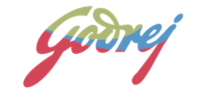


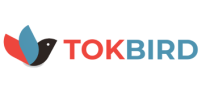
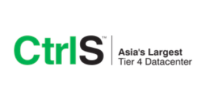
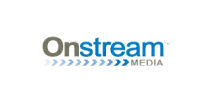

Founder, Concierge Care Plus